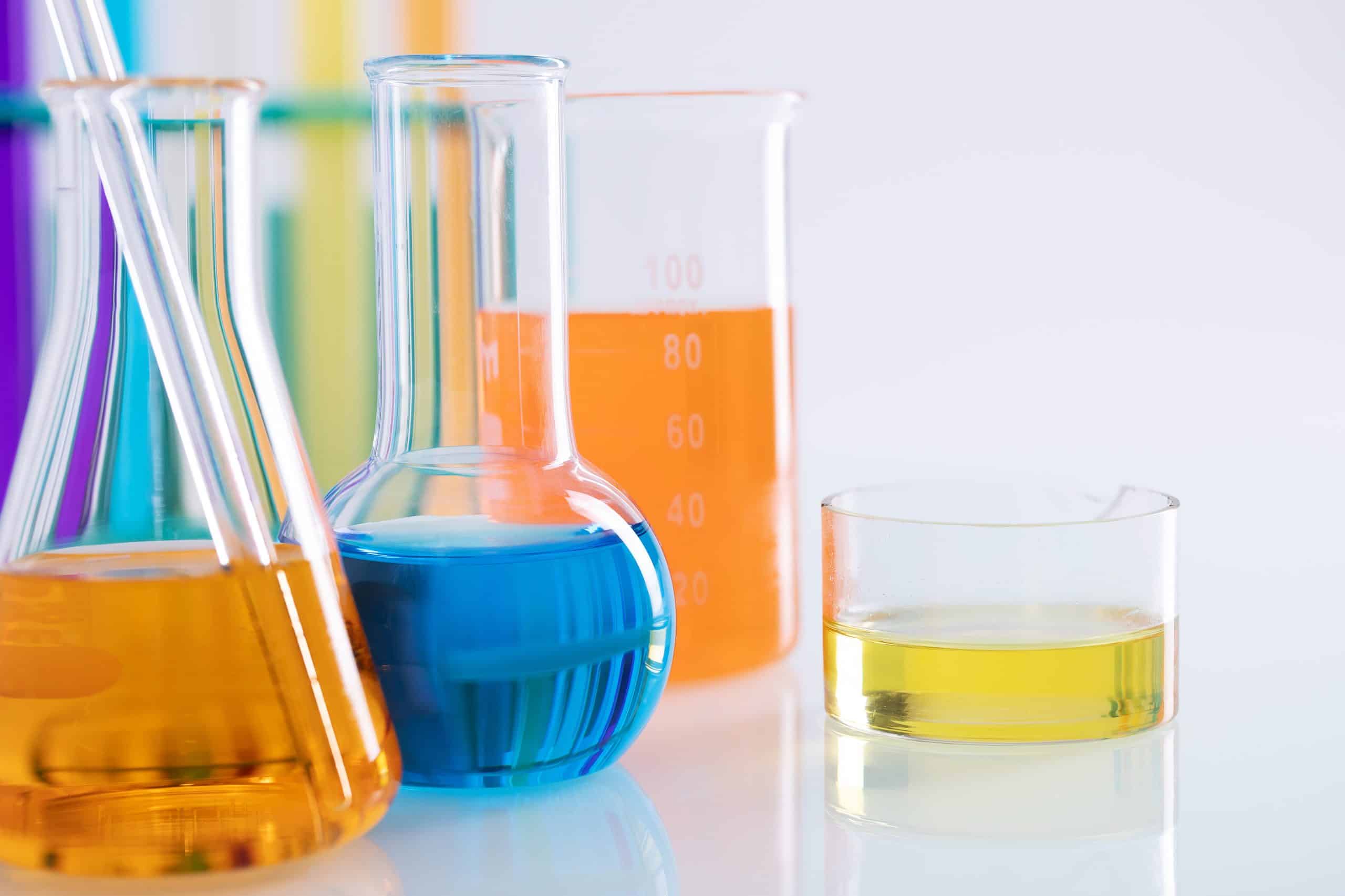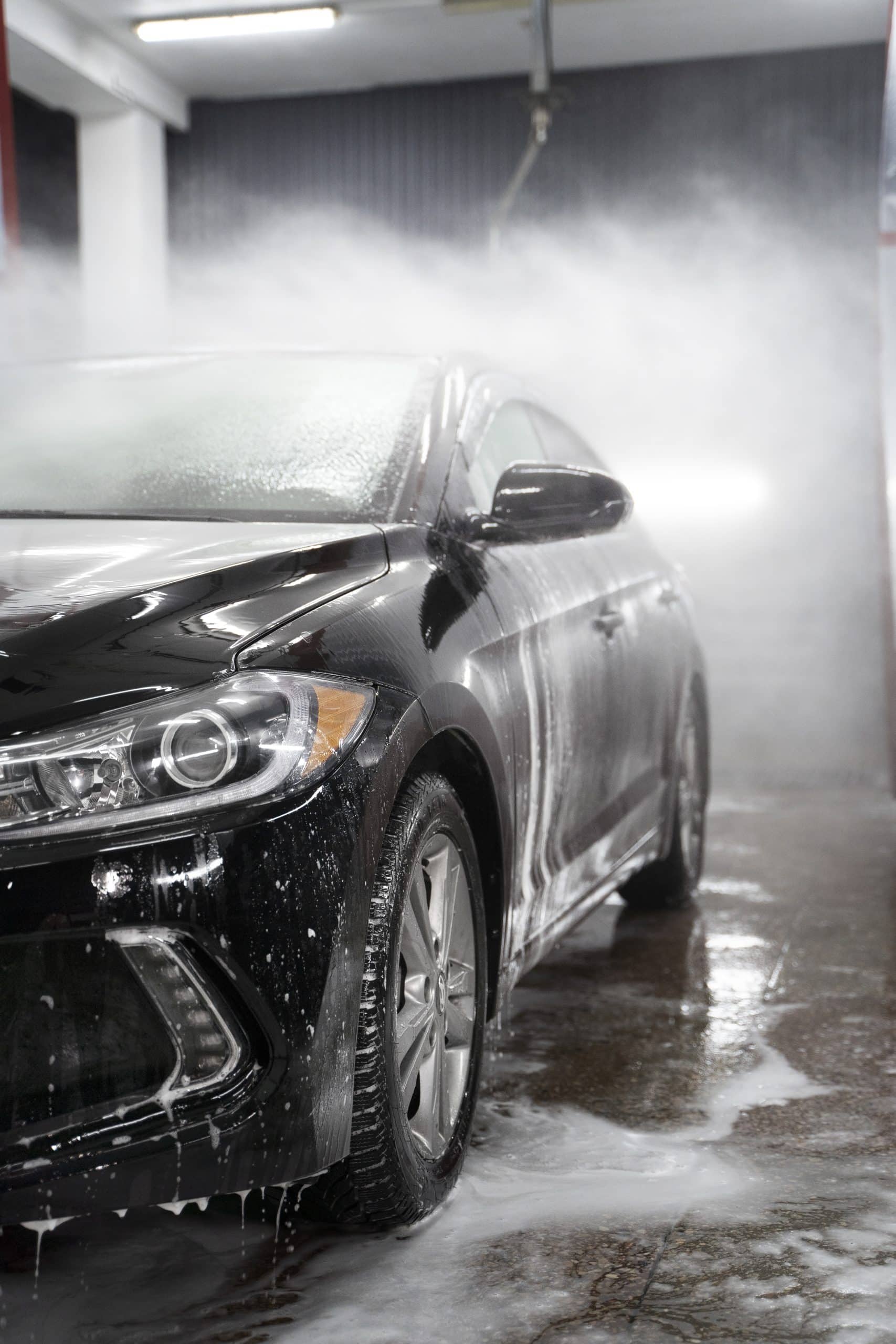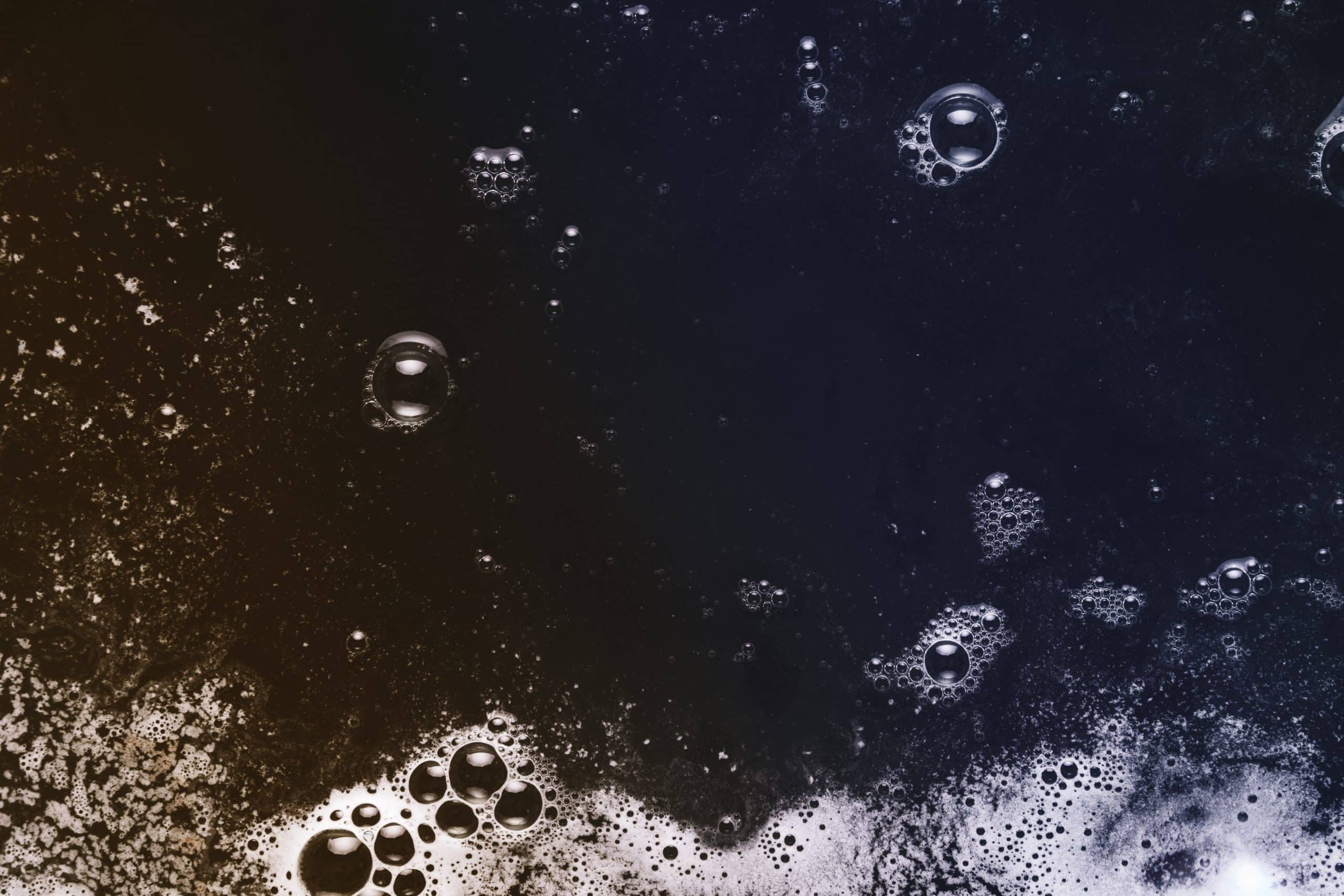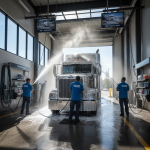Revolutionary advancements in vehicle wash systems have paved the way for touchless washing, and at the core of this innovation lies the remarkable application of chemistry. As the demand for efficient, eco-friendly, and thorough vehicle cleaning solutions rises, the pivotal role of chemistry in enhancing touchless vehicle wash systems cannot be overstated. Cutting-edge chemical formulations not only ensure the removal of tough grime and dirt but also protect the vehicle’s finish, without the need for abrasive physical contact.
Furthermore, the precise chemical compositions enable targeted cleaning, resulting in a superior shine and unparalleled cleanliness. This article delves into the transformative impact of chemistry on touchless vehicle wash systems, uncovering the remarkable processes and ingredients that elevate the entire experience. From hydrophobic coatings to advanced surfactants, the integration of chemistry promises a new era of automotive cleaning. Join us as we explore the fascinating intersection of chemical excellence and touchless vehicle wash systems, charting a course towards uncompromising cleanliness and preservation.
Understanding touchless vehicle wash systems
Touchless vehicle wash systems represent a significant leap forward in the automotive cleaning industry. Unlike traditional methods that rely on brushes and physical contact, touchless systems utilize a combination of high-pressure water jets and specialized chemical solutions to remove dirt, grime, and contaminants from the vehicle’s surface. This approach not only reduces the risk of scratches and swirl marks but also provides a more thorough and efficient cleaning process.
The key to the effectiveness of touchless vehicle wash systems lies in the precise calibration of water pressure, temperature, and chemical formulations. By harnessing the power of chemistry, these systems can target and break down stubborn residues without compromising the integrity of the vehicle’s paint or finish. This careful balance of technology and chemistry ensures that touchless vehicle wash systems deliver exceptional results while minimizing the potential for damage or wear and tear on the vehicle’s exterior.
Touchless vehicle wash systems have gained popularity among vehicle owners who prioritize the preservation of their vehicle’s appearance and value. The ability to achieve a deep clean without subjecting the paintwork to abrasive friction has positioned touchless systems as a preferred choice for discerning enthusiasts and professional vehicle care providers alike. As consumer awareness of the benefits of touchless cleaning continues to grow, the role of chemistry in optimizing these systems becomes increasingly significant, underpinning their ability to deliver superior results with minimal impact on the vehicle’s surface.

The role of chemistry in touchless vehicle wash systems
At the heart of touchless vehicle wash systems is a sophisticated blend of chemical compounds that work synergistically to dissolve, emulsify, and encapsulate dirt and contaminants. These specialized formulations are designed to be effective at low concentrations, ensuring thorough cleaning while minimizing the environmental impact. The science of chemistry enables the development of these innovative solutions, incorporating surfactants, solvents, and other active ingredients that interact with dirt particles and facilitate their removal from the vehicle’s surface.
Moreover, the understanding of chemical reactions and molecular interactions allows for the creation of cleaning agents that can be tailored to specific cleaning challenges. Whether it’s addressing road grime, tar, or environmental pollutants, the versatility of chemistry empowers vehicle wash systems to adapt and deliver customized cleaning solutions. This adaptability is a testament to the essential role that chemistry plays in ensuring the efficacy and versatility of touchless vehicle wash systems, elevating them beyond conventional cleaning methods.
The contribution of chemistry extends beyond the cleaning process itself, encompassing the development of hydrophobic coatings and protective treatments that enhance the durability and resilience of the vehicle’s finish. By leveraging chemical principles, these coatings create a molecular barrier on the surface, repelling water, dirt, and other contaminants. This not only preserves the shine and luster of the vehicle but also simplifies future cleaning efforts, making maintenance more manageable for vehicle owners.
Key chemical components for touchless vehicle wash systems
In the realm of touchless vehicle wash systems, the selection and formulation of chemical components are critical to achieving optimal cleaning performance. Surfactants, which lower the surface tension of water, are fundamental to the process, enabling the water to spread and penetrate dirt and grime effectively. These surfactants are carefully engineered to balance cleaning power with environmental considerations, ensuring that they can tackle tough stains while remaining biodegradable and eco-friendly.
Additionally, solvents play a vital role in dissolving and lifting oily residues and contaminants from the vehicle’s surface. The careful selection of solvents with high solvency power and low volatility contributes to the efficiency and safety of touchless vehicle wash systems. Furthermore, the inclusion of corrosion inhibitors in the chemical formulations helps protect metal surfaces from the potential effects of aggressive cleaning agents, preserving the structural integrity of the vehicle over time.
The synergy of these key chemical components, combined with the precise calibration of water pressure and temperature, results in a comprehensive cleaning solution that effectively removes dirt and grime while safeguarding the vehicle’s exterior. This harmonious blend of chemistry and engineering underscores the integral role of chemical components in the success of touchless vehicle wash systems, positioning them as a cornerstone of modern automotive care.

Advantages of using chemistry in touchless vehicle wash systems
The integration of chemistry in touchless vehicle wash systems offers a multitude of advantages that resonate with both vehicle owners and professional vehicle care providers. One of the primary benefits is the ability to achieve a thorough and comprehensive clean without subjecting the vehicle to physical abrasion. This not only reduces the risk of surface damage but also ensures consistent cleaning results, regardless of the vehicle’s shape or contours.
Furthermore, the tailored chemical formulations used in touchless systems allow for targeted cleaning, addressing specific contaminants and stains with precision. This level of customization contributes to a more efficient cleaning process, saving time and resources while delivering exceptional results. Moreover, the protective properties of certain chemical components contribute to the longevity of the vehicle’s finish, preserving its appearance and reducing the frequency of intensive cleaning sessions.
Another significant advantage of chemistry in touchless vehicle wash systems is the environmental consideration it embodies. By utilizing biodegradable and eco-friendly formulations, these systems minimize their impact on the surrounding ecosystem, promoting sustainable vehicle care practices. This aligns with the growing emphasis on environmental responsibility and underscores the role of chemistry in driving innovation towards greener and more sustainable solutions.
Chemistry’s impact on vehicle surface protection
Beyond the realm of cleaning, chemistry plays a pivotal role in safeguarding the vehicle’s surface from environmental elements and wear. The development of hydrophobic coatings, which repel water and contaminants, is a prime example of chemistry’s impact on vehicle surface protection. These coatings leverage the principles of molecular bonding to create a resilient barrier that shields the vehicle’s paintwork from water spots, dirt, and UV radiation.
In addition to hydrophobic coatings, the integration of chemical compounds that offer UV resistance and oxidation protection further enhances the durability of the vehicle’s finish. These advanced formulations act as a shield against the detrimental effects of sunlight and environmental exposure, preserving the vibrancy and integrity of the paintwork. The culmination of these protective measures underscores the indispensable role of chemistry in fortifying the vehicle’s surface against the rigors of daily use and environmental factors.
The application of chemistry in vehicle surface protection extends to the development of specialized sealants and waxes that provide an additional layer of defense against contaminants and abrasion. These products leverage chemical bonding to create a resilient and long-lasting shield, ensuring that the vehicle’s finish remains lustrous and resistant to environmental wear. The combination of these protective treatments with the cleaning efficacy of touchless vehicle wash systems results in a comprehensive approach to maintaining the appearance and value of vehicles.
Environmental considerations and green chemistry in touchless vehicle wash systems
The evolution of touchless vehicle wash systems has been closely intertwined with the principles of green chemistry, emphasizing the development and utilization of sustainable and environmentally friendly chemical solutions. This commitment to eco-conscious practices is evident in the formulation of cleaning agents that prioritize biodegradability and low environmental impact. By minimizing the use of harsh chemicals and prioritizing eco-friendly alternatives, touchless vehicle wash systems align with the global shift towards sustainable and responsible vehicle care practices.
Furthermore, the efficient use of water and energy in touchless systems underscores their eco-friendly credentials, reducing overall consumption and waste. The combination of high-pressure water jets and precisely formulated chemical solutions ensures that the cleaning process is both effective and resource-efficient. This focus on sustainability resonates with vehicle owners who seek environmentally responsible cleaning options and positions touchless vehicle wash systems as a progressive and conscientious choice for automotive care.
The integration of green chemistry principles in touchless vehicle wash systems reflects a commitment to minimizing the industry’s environmental footprint while delivering uncompromising cleaning performance. This dedication to sustainability not only responds to the increasing consumer demand for eco-friendly solutions but also sets a precedent for the future of automotive cleaning, emphasizing the potential for chemistry to drive innovation towards cleaner and greener practices.
Chemistry innovations in touchless vehicle wash technology
The landscape of touchless vehicle wash technology continues to evolve, driven by ongoing innovations in chemical formulations and application methods. One notable area of advancement is the development of encapsulating polymers that enhance the cleaning efficacy of touchless systems. These polymers form a protective barrier around dirt particles, allowing them to be lifted from the vehicle’s surface without redepositing or causing abrasion.
Moreover, the integration of advanced foaming agents in touchless vehicle wash systems has revolutionized the cleaning process, enabling a more thorough and clinging application of the cleaning solution. This innovative approach ensures that the chemical formulations have extended contact time with contaminants, maximizing their effectiveness and contributing to a deeper clean. The continuous refinement of chemical innovations in touchless vehicle wash technology underscores the dynamic role of chemistry in shaping the future of automotive cleaning.
In parallel, the utilization of nanotechnology in chemical formulations has opened new frontiers in touchless vehicle wash systems, enabling the creation of ultra-thin protective coatings and enhanced cleaning agents. These nano-enhanced solutions leverage the unique properties of nanomaterials to deliver superior performance, further elevating the cleaning and protective capabilities of touchless systems. The convergence of chemistry and nanotechnology represents a cutting-edge frontier in automotive care, promising advanced cleaning solutions and durable surface protection.

Best practices for integrating chemistry into touchless vehicle wash systems
Optimizing the integration of chemistry into touchless vehicle wash systems requires a comprehensive approach that encompasses formulation, application, and environmental considerations. One fundamental best practice is the ongoing research and development of chemical formulations tailored to address evolving cleaning challenges and environmental standards. This commitment to innovation ensures that touchless systems remain at the forefront of automotive cleaning, delivering effective and sustainable solutions.
Furthermore, the calibration of chemical concentrations and application methods is essential to achieving consistent and reliable cleaning results. By fine-tuning the balance of chemical components and water pressure, touchless vehicle wash systems can adapt to varying cleaning requirements while minimizing waste and environmental impact. This precision in application underscores the meticulous approach that chemistry demands in optimizing touchless cleaning solutions.
Another best practice involves educating vehicle owners and professional vehicle care providers on the benefits and best applications of chemistry-driven touchless vehicle wash systems. By fostering awareness and understanding of the role of chemistry in automotive cleaning, industry stakeholders can maximize the potential of touchless systems while promoting responsible and effective vehicle care practices. This collaborative effort ensures that the transformative impact of chemistry is fully realized across the automotive care landscape.
Chemistry-focused touchless vehicle wash products and brands
The growing prominence of chemistry-focused touchless vehicle wash systems has led to the emergence of specialized products and brands that champion the integration of advanced chemical formulations. These products leverage cutting-edge chemistry to deliver superior cleaning performance while prioritizing environmental responsibility and surface protection. From concentrated cleaning solutions to protective coatings, the market for chemistry-driven touchless vehicle wash products continues to expand, offering vehicle owners and professional detailers a diverse array of options to enhance their cleaning routines.
Moreover, leading brands in the touchless vehicle wash industry have embraced chemistry as a cornerstone of their product development, investing in research and innovation to advance the efficacy and sustainability of their offerings. This commitment to chemistry-focused solutions underscores the industry’s recognition of the pivotal role that chemical formulations play in shaping the future of automotive cleaning. As a result, vehicle owners and businesses can access a range of chemistry-driven touchless vehicle wash products that cater to their specific cleaning and protection needs.
The emphasis on chemistry-focused touchless vehicle wash products and brands reflects a collective dedication to elevating the standards of automotive care while prioritizing environmental stewardship. By harnessing the transformative potential of chemistry, these products and brands empower vehicle owners and professional detailers to achieve exceptional cleaning results without compromising the integrity of the vehicle’s surface. This reinforces the indispensable nature of chemistry in driving innovation and progress within the touchless vehicle wash industry.
Conclusion and the future of chemistry in touchless vehicle wash systems
In conclusion, the integral role of chemistry in elevating touchless vehicle wash systems cannot be overstated. From the precise formulation of cleaning agents to the development of protective coatings and innovative applications, chemistry underpins the transformative impact of touchless systems on automotive cleaning. The synergy of chemical components, advanced technology, and environmental considerations enables touchless vehicle wash systems to deliver uncompromising cleaning results while safeguarding the vehicle’s surface and the surrounding ecosystem.
Looking ahead, the future of chemistry in touchless vehicle wash systems holds promise for continued innovation and advancement. As the demand for sustainable and effective vehicle cleaning solutions grows, chemistry will serve as a catalyst for driving the development of eco-friendly formulations, advanced protective treatments, and enhanced cleaning technologies. This trajectory not only aligns with the evolving preferences of vehicle owners and professional vehicle care providers but also underscores the enduring significance of chemistry in shaping the landscape of touchless automotive cleaning.
In essence, the remarkable intersection of chemistry and touchless vehicle wash systems represents a testament to the transformative power of scientific innovation in redefining automotive care. By embracing chemistry-driven solutions, vehicle owners and businesses can embark on a journey towards uncompromising cleanliness, preservation, and sustainability, ushering in a new era of automotive cleaning excellence. The chemistry of touchless vehicle wash systems stands as a testament to the potential of scientific innovation to elevate the standards of vehicle care, promising a future where chemistry continues to shape and optimize the automotive cleaning experience.




